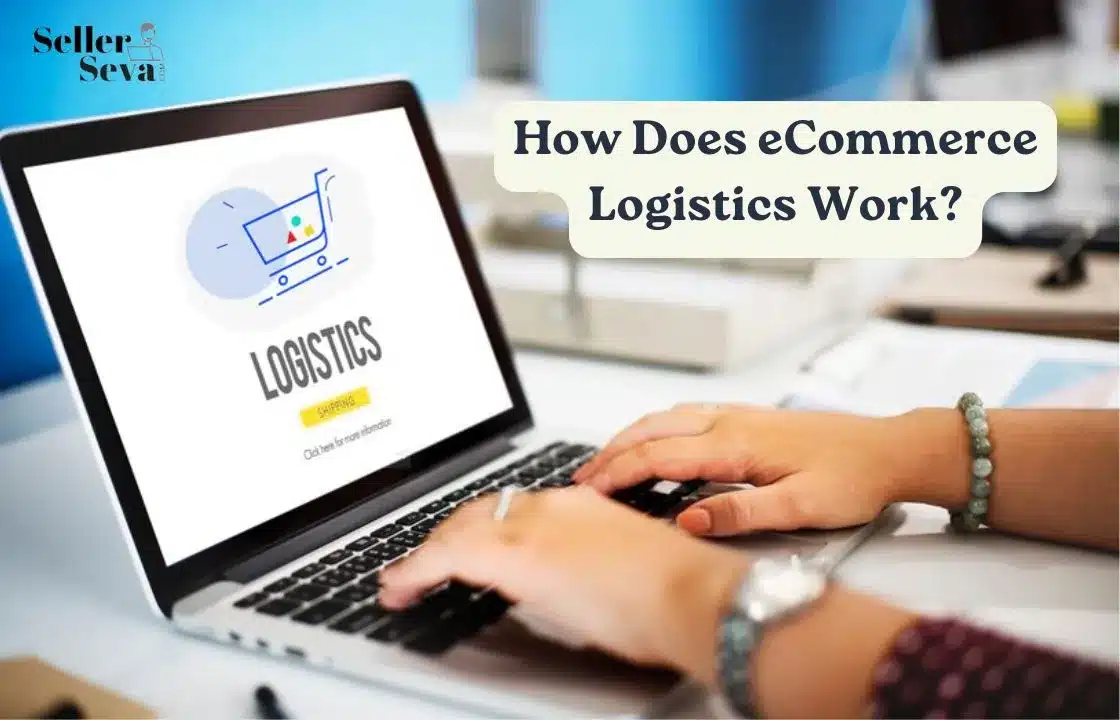
Table of Contents
Introduction
Every time a package reaches your doorstep, there is a rigorous process that is referred to as eCommerce logistics. It is the kind of thing that makes shopping online fast and easy. From the day you place an order to the day when you open the packaging, many steps need to be taken to deliver your product on time. Want to know how all this is done? Now, let’s discuss how eCommerce logistics helps make online shopping easy and why it is such an important aspect of the shopping process.
What is eCommerce logistics?
E-commerce logistics and supply chain define the entire process, starting with the order placed with the vendor and ending with the delivery of the consignment at the customer’s doorstep. This ranges from shipping within eCommerce, the eCommerce delivery process, and eCommerce warehouse management. It’s a complex operation that covers warehousing and storage, packing and dispatching of products, and product returns.
Components of eCommerce Logistics
Order Fulfillment: The process of fulfilling eCommerce orders occurs in a warehouse. This includes the warehousing of products, packing, and transporting of products, among others. Effective eCommerce fulfilment involves packing the products in the right manner and dispatching them as quickly as possible. This step affects many aspects of the actual unboxing experience, including the box itself and possibly any samples.
Inventory Management: It is critical to manage eCommerce warehouses appropriately. Inventory management involves identifying which products are stored, their location, and how much demand is expected in the future. It also assists in the shipment of orders and ensuring there are no stockouts. It is also crucial for businesses that have products of different sizes and colours to use advanced systems to manage inventory.
Warehousing: The warehousing of product stock is what eCommerce warehousing offers. Warehouse location is critical. It impacts both the availability of shipping schedules and delivery slots. Effective storage has a way of making products easily accessible and easily shipped to customers to meet their needs.
Order Packing and Shipping: Packing is not just about placing an item in a container and calling it a day. It involves choosing the appropriate shipping company and type of packaging material and addressing any specific concerns. In case you have an internal logistics team or use a third-party logistics company to manage your deliveries, it is vital to pay special attention to packing to avoid delays in delivery time.
Returns and Reverse Logistics: The eCommerce delivery process is not complete with the package getting delivered to the consumer. Another important aspect is the management of returns and exchanges, or reverse logistics, as it is called. A well-organized reverse logistics system ensures that the returns are effectively managed to avoid excessive returns and loss of customer confidence.
Why is eCommerce Logistics essential?
Due to the growth in eCommerce business, eCommerce logistics have become more essential. Consequently, brands must pay attention to logistics to meet the increased demand from the growing e-commerce market. Here’s why:
Customer Expectations: Consumers expect quick and efficient delivery of products. Therefore, efficient shipping in eCommerce aids in meeting these expectations.
Cost Management: Efficient transportation is achievable, thereby cutting the costs of freight and boosting financial performance.
Operational Efficiency: Outsourcing and strengthening logistics management improve the results and develop the business.
Three Main Parts of eCommerce Logistics
Storage: This involves the receipt, inspection, and put-away of products in a warehouse. Effective and efficient eCommerce warehouse management means that all the stocks that are in the warehouse are well sorted and easily accessible for dispatch.
Information Systems: Processing multiple orders online depends on the advancement of technology. A reliable WMS system is crucial in tracking stock and ensuring that packing and dispatch procedures are optimally controlled.
Last-Mile Delivery: The last process is the delivery of the package from the warehouse to the doorstep of the customer. This includes scheduling areas to pack, ways to label, and routes to transport bags. The final delivery is vital as it determines the time and quality at which orders are delivered to clients.
What is a supply chain?
The eCommerce supply chain therefore refers to all the systems and processes that are involved in ensuring products get to the customers. These are suppliers, fulfilment centres, distribution centres, and carriers. Every single link has to run smoothly to maintain the proper supply chain and satisfaction of the customers.
Types of Logistics Management
In-House Logistics: Logistics is a responsibility that various companies control within their organizations. This includes moving and storing inventory, various types of packaging, and shipment of goods, which can involve relations with the shipping company.
Third-Party Logistics (3PL): Third-party logistics or 3PL providers offer services in warehousing, packing, and shipping services for eCommerce companies. They help to reduce costs and can easily accommodate any changes in supply chain and business requirements.
Dropshipping: In dropshipping, the retailer doesn’t get direct control or possession of the products sold to customers. However, in this case, the products are shipped straight from the third-party supplier to the customer, which makes distribution easier but may cause a delay in delivery.
Challenges and Solutions of eCommerce Logistics:
Find a Logistics Partner Early: Select the appropriate logistics provider that meets your organization’s requirements.
Balance Value-Add Logistics with Profit: But it is vital to ensure that the added value through logistics does not exceed the profits.
Prioritize Free and Fast Shipping: Flexible shipping policies such as free and fast shipping services might help to get more clients.
Automate Where Possible: Introduce efficient technology to handle the various logistical needs of the business.
Regionalize Inventory: Minimize the logistics chain and have products closer to the consumers to lower the costs of transporting and time taken.
Diversify Your Supply Chain: Do not solely depend on one supplier or the logistics provider to help manage the risks.
Conclusion
eCommerce logistics is one of the most significant and challenging components of the online business. Starting from the storage facilities up to the final steps that the products take towards reaching the customers’ door, each step is vital. Thus, by evaluating these operations, companies may improve the customer experience and their workings. Regardless of whether to manage the logistics internally or work with a 3PL vendor, a focus on efficiency, cost, and speed will benefit an e-commerce business.
